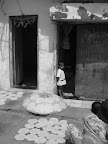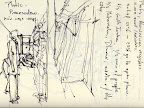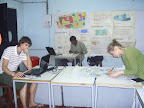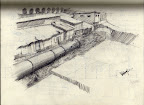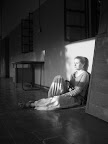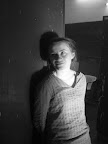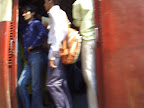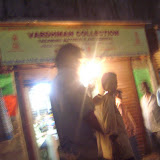 |
| Mapping Dharavi Main Road |
How can you take a picture without looking at the camera, knowing that you are being measured by the people who walk next to you?
March 11:

An open Discussion with the teachers about what we were doing.
March 12:

Tour through the city, we drive around in the bus the thing that called my attention was the fishermen village. A small place in the middle of the city which I imagine was completely swallowed by Mumbai and now it can be consider as a slum. We ended in a movie theater to see Bollywood. Of course I felt sleep.
March 13:
A day without a camera by myself and without the opportunity to draw anything.
We had to find Amina Khan, social worker in Muslim Negar. Amina lives there since 1947 and everybody knows her and she also knows everybody. Amina is an incredible woman a complete matriarch. The presence this woman has inside the Negar is huge, almost scary to tell the truth. Even when she live in Dharavi, I have the impression that that woman is everything but poor. She was very helpful for us and she helped us to understand the culture and the History of Muslim Negar.
March 14:
Another day without a camera by myself and without the opportunity to draw anything.
We met Azif, another social worker in Muslim Negar. As Amina, he gave the impression of being quite wealthy, if not wealthy, not poor. His presence is not a strong as Amina’s but it is obvious that he also knows a lot of the Negar. It is a shame that we did not have any other opportunity to talk with him.



